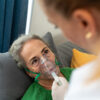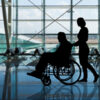Sometimes, patients who are stable but are unable to travel by conventional means are required to use non emergency medical transportation services owing to their mobility issues, oxygen requirements and ease of travel. But before you contact any non emergency medical air transport company, get to know what you should expect from their services.
Medical transportation has been evolving rapidly to meet even the most unexpected demands of patients with perfect ease. In fact, even the remotest of places have gained 24 hour access to emergency and non-emergency medical air transport services today. Medical attendants along with the entire crew on-board are qualified to provide required medical assistance to patients on board and also on ground.
How Non-Emergency Medical Air Transport Services Operate
In most areas, air ambulance services operate in city or county and also as independent operators. All the air medical transport companies are required to be fully licensed and insured and must meet the state federal and certification requirements.
Every service provider is expected to maintain a team of fully trained flight attendants who are dedicated to work towards the safety of every patient. The fight crew should include a minimum of one pilot, a well qualified paramedic along with a critical care nurse.
Types of Aircraft Used
Most of the non-emergency medical transportation companies make use of a wide range of aircrafts for the purpose of safely transporting medical patients to formal medical care units. The size of the airplane to be used is generally decided upon the location and condition of the patient.
Most cabins inside the plane are outfitted with the latest medical facilities, which allow patients to be conveniently transported to desired locations even during extreme weather conditions and for emergency relocation of critical patients in times of need.
Levels of Medical Air Transportation
Typically, there are three levels of medical air transportation services namely, basic life support, advanced support and lastly, critical care. These levels are indicative of the level of care, use of medical equipments and level of trained medical staff required by the patient while travelling.











